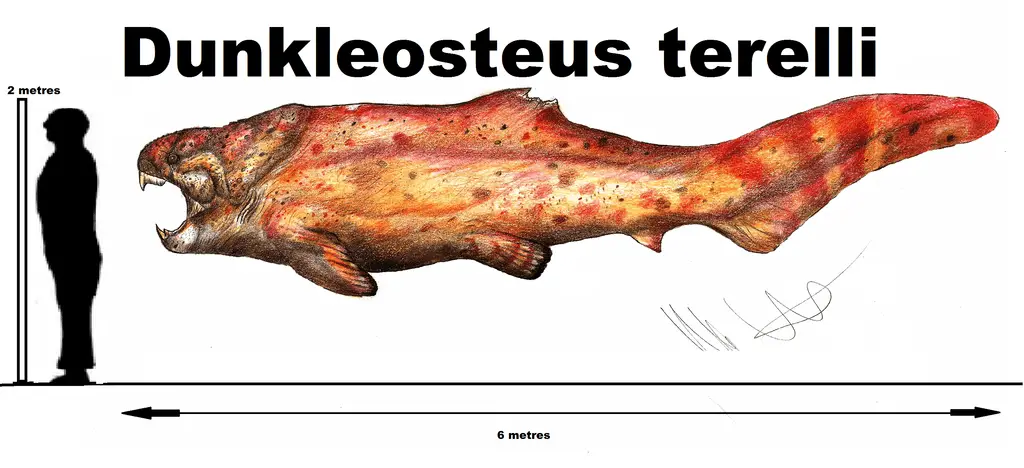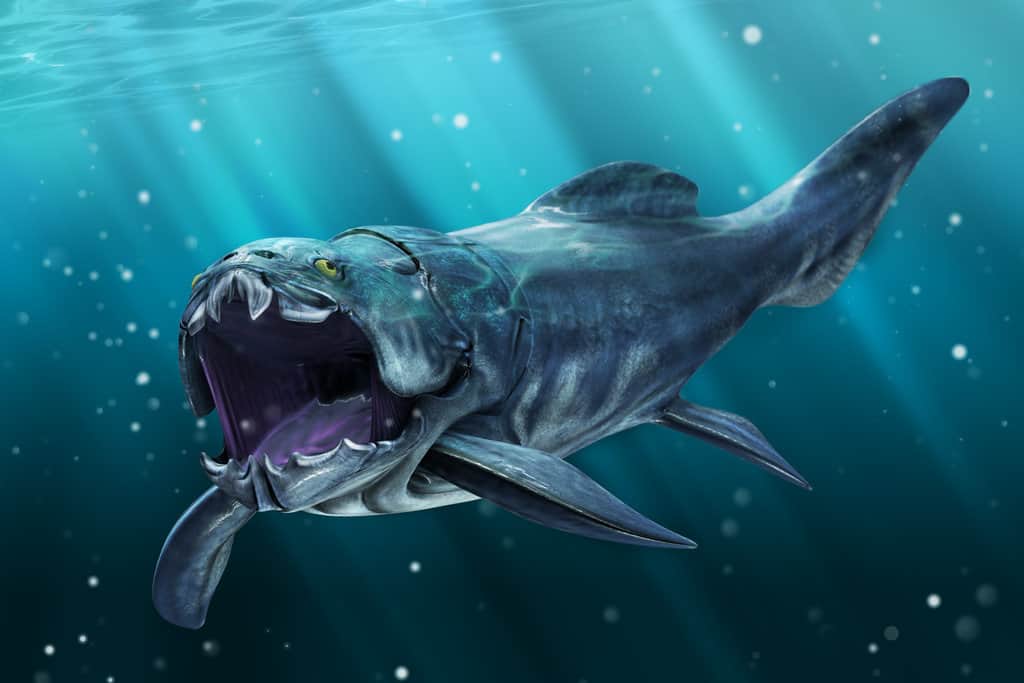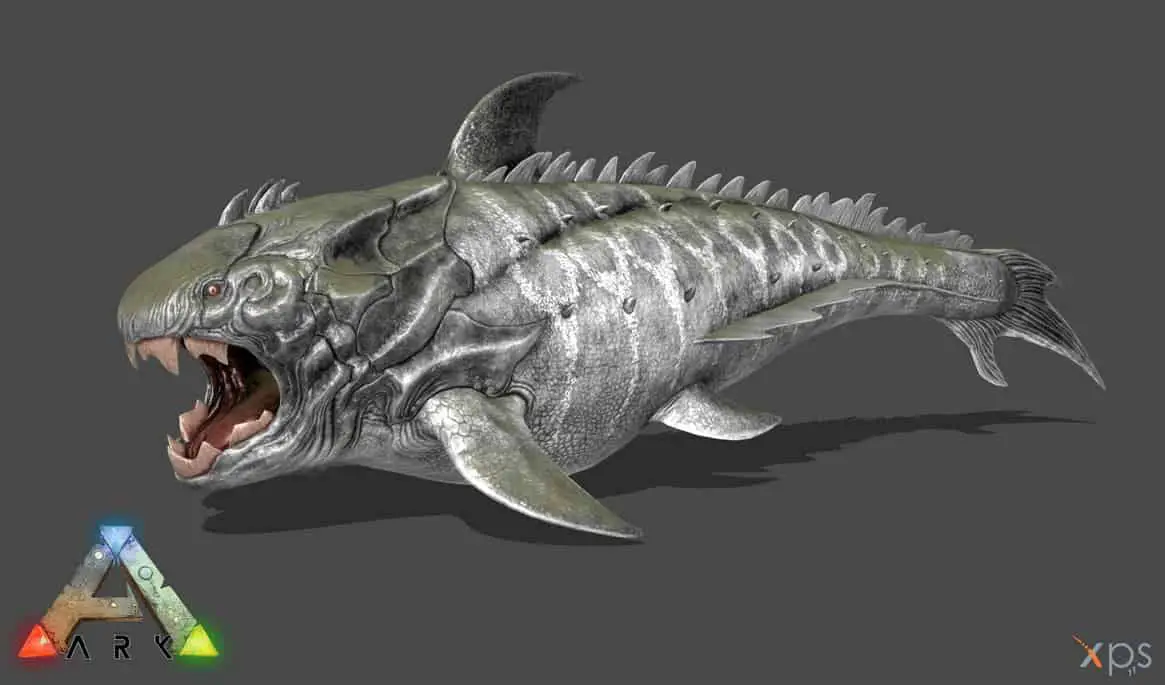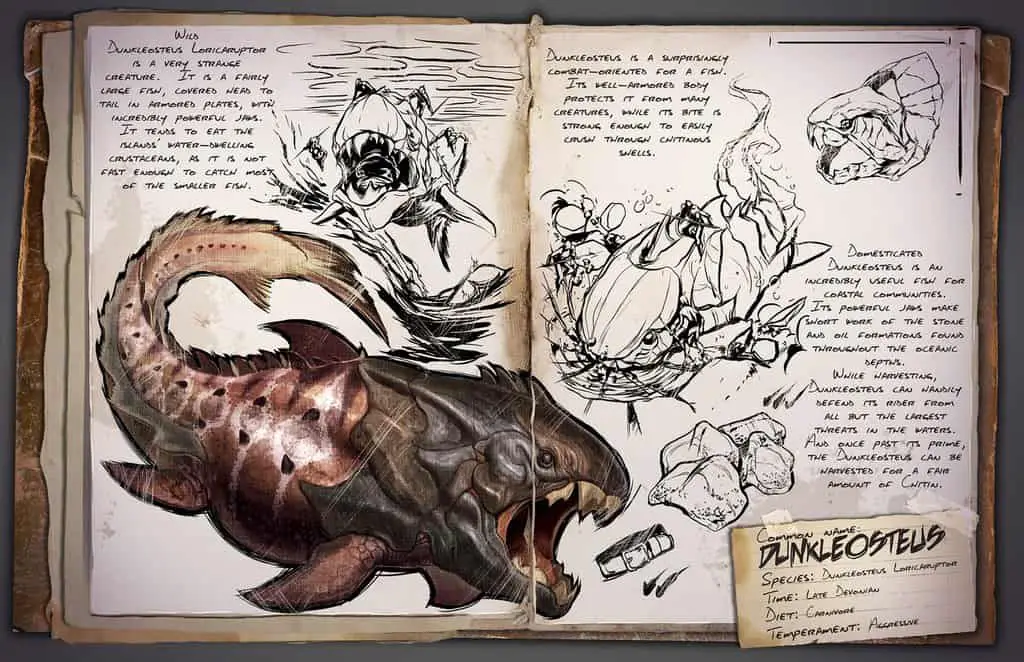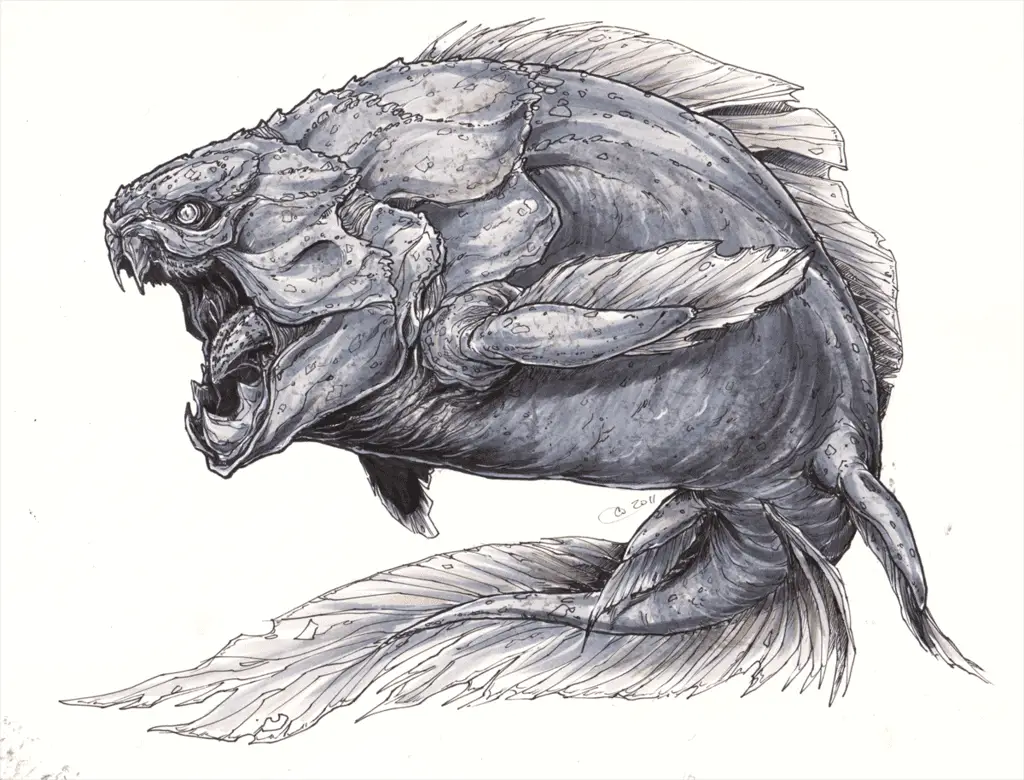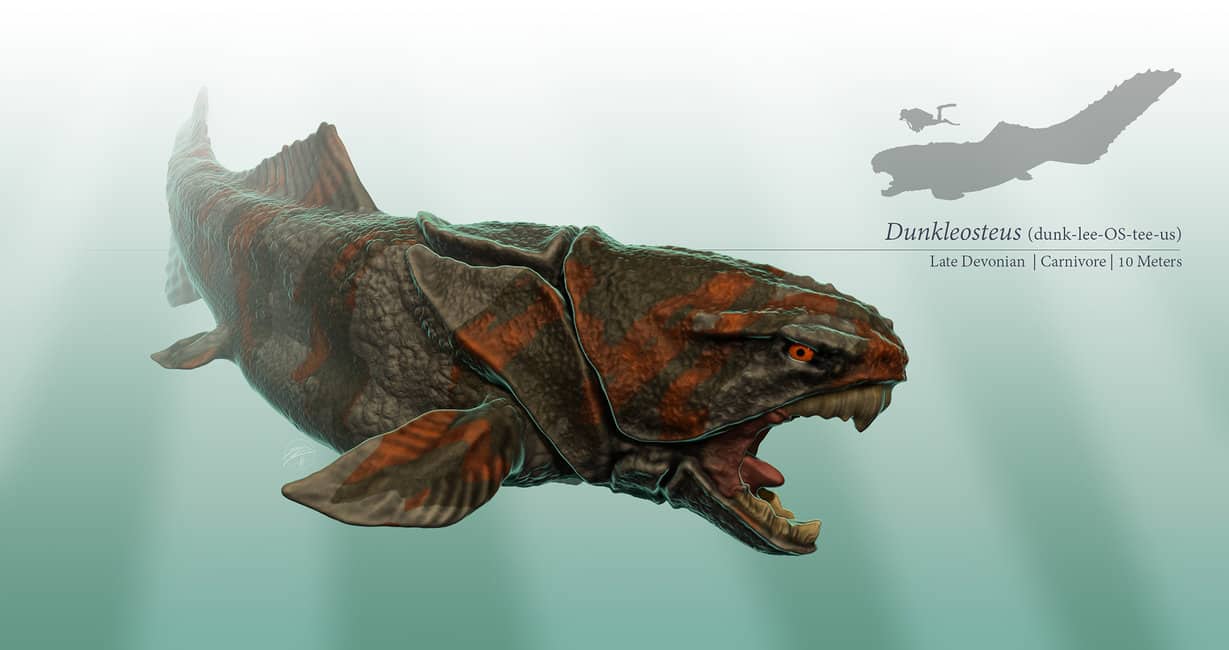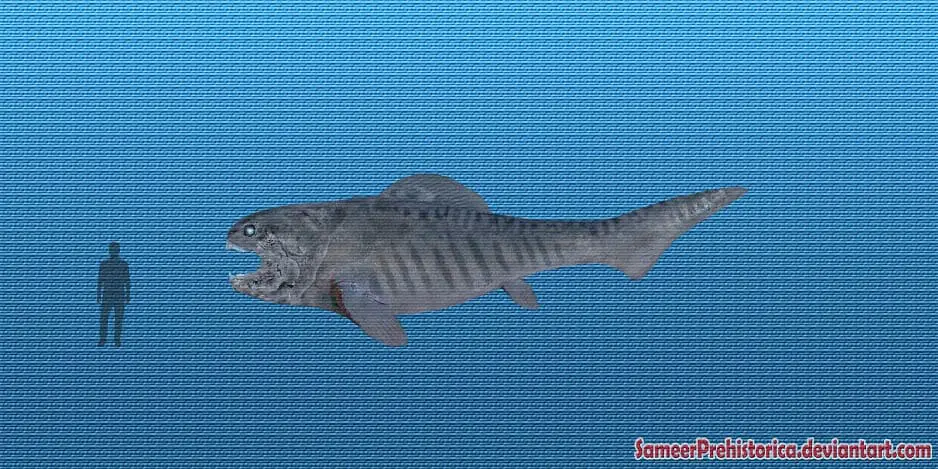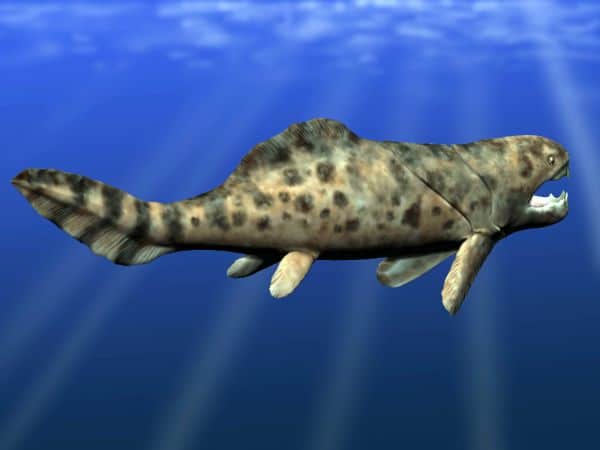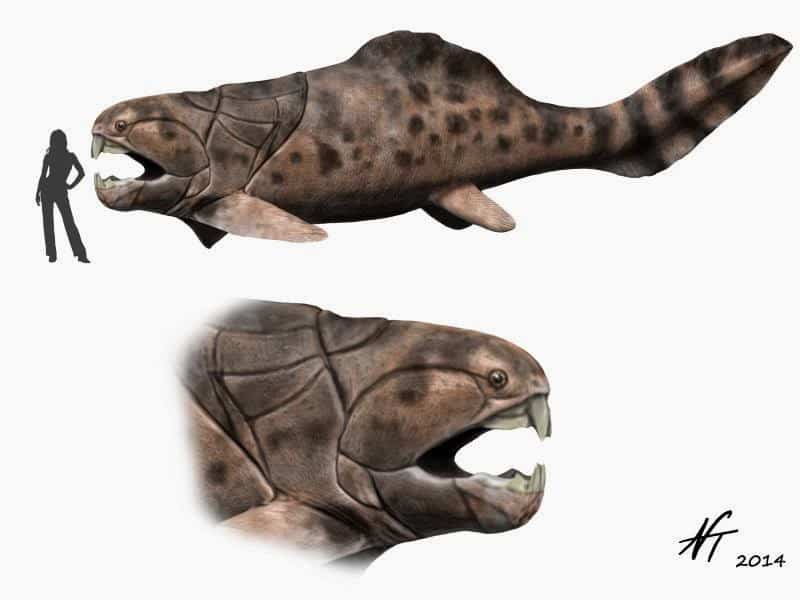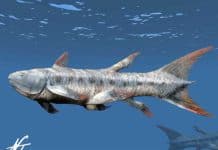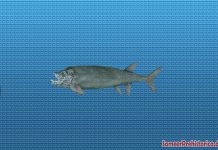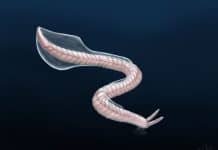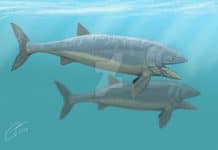Quick Dunkleosteus Facts
- Lived during the Late Devonian Period.
- Lived in oceans worldwide
- Was a predatory fish
- Was longer than a London bus
- Weighed as more than a killer whale
About Dunkleosteus
Dunkleosteus is a fish which lived approximately 380 to 360 million years ago during the Late Devonian Period. Although it was discovered in the late 19th century, it wasn’t named until 1956. It was named Dunkleosteus in honor of then curator of the Vertebrate Paleontology at the Cleveland Museum of Natural History, David Dunkle.
If you look at Dunkleosteus pictures, then you might think that it was one of the most ferocious creatures of all time. And who would blame you? It was probably one of the largest fishes of its time – being 30 feet long and weighing in excess of 3 tons. It was also built like a heavily armored submarine, a submarine with a giant head and bulging eyes. Fortunately, it didn’t have teeth, but it did have an upper and lower bony jaw plate that probably could have been used as teeth, especially with its tremendous bite force. However, none of that would’ve mattered anyway because it could probably swallow its prey whole. It could just gulp it down in one swallow.
One of the most fascinating facts about Dunkleosteus, however, is the bite force that it had in its jaws. Scientists have done some research and have crunched the numbers and they have determined that this fish could have bit down with a lot of force. In fact, scientists estimate that it could have generated up to 8000 pounds of bite force per square inch on its prey. For comparison, a crocodile has a bite force of about 3700 pounds a square inch.
Dunkleosteus was a fish that flourished worldwide. Its armored flesh was nearly impervious to any of its enemies and it had a tremendous bite force. Which brings up the question of why did these animals go extinct? And paleontologists have come up with an answer to that question. They believe this fish went extinct because oxygen levels in the ocean dropped significantly. This would have killed off giant fish like this one but allowed smaller ones to thrive. And that is why smaller fish would dominate for tens of millions of years, or at least until the rise of marine reptiles during the Mesozoic Era.
